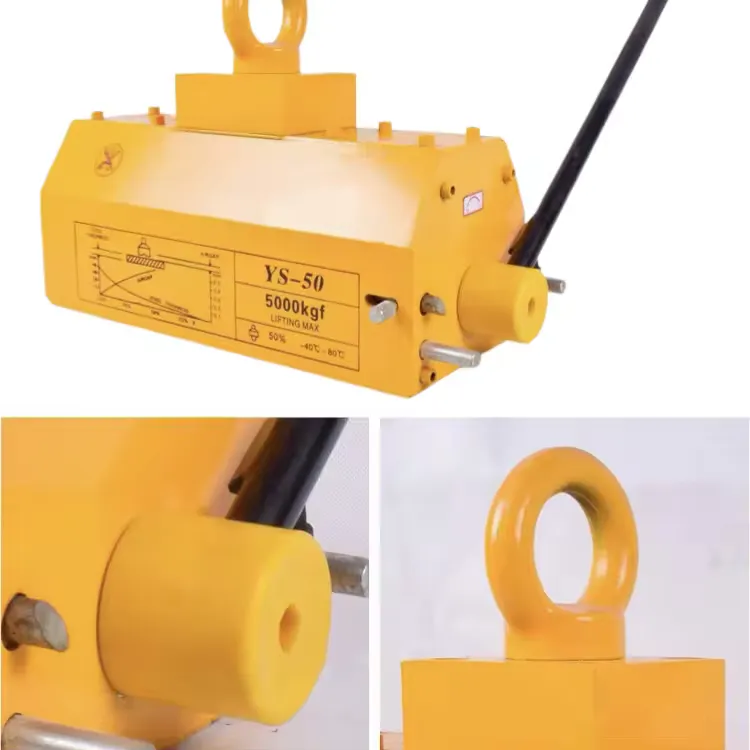new overhead travelling cranes
New Overhead Traveling Cranes Innovations and Benefits
Overhead traveling cranes are indispensable equipment in various industries, including manufacturing, warehousing, and construction. These powerful machines are designed to lift and transport heavy loads across a designated area, enhancing productivity and safety. As technology advances, new innovations in overhead traveling cranes are revolutionizing how businesses operate, making them more efficient, safer, and environmentally friendly.
Enhanced Safety Features
One of the primary concerns in any industrial setting is safety. New overhead traveling cranes are equipped with advanced safety features that significantly reduce the risk of accidents. For instance, many modern cranes come with anti-collision systems that prevent accidents when multiple cranes operate within the same area. Additionally, load sensors are integrated into the system to detect overload conditions, which can trigger alarms and automatic shut-off mechanisms to prevent accidents.
Moreover, the incorporation of smart technology means that operators can monitor crane performance in real time. This includes tracking the weight being lifted, the duration of the lift, and any potential mechanical failures. Such innovations not only enhance safety for operators and other personnel but also extend the lifespan of the equipment.
Increased Efficiency
Efficiency is crucial for maintaining a competitive edge in any industry. New overhead traveling cranes are designed with power and speed in mind. Advanced control systems allow for precise movements, enabling operators to maneuver loads quickly and accurately. The latest models often feature dual speed control and variable frequency drives, which provide smoother acceleration and deceleration.
Additionally, overhead traveling cranes now come with automated features that allow for remote operation. This innovation means that operators can control the crane from a safe distance, reducing the risk of injury due to falling loads or other accidents. Furthermore, the use of automation can lead to a significant reduction in the time needed to complete lifting tasks, thus improving overall workflow efficiency.
new overhead travelling cranes

Eco-Friendly Practices
As industries seek to minimize their carbon footprints, new overhead traveling cranes are being designed with sustainability in mind. Modern cranes are often built with energy-efficient motors and systems that consume less power. Some manufacturers are also exploring the use of alternative energy sources, such as solar power, to operate these cranes.
Moreover, improvements in design and materials mean that newer cranes require less maintenance and have a longer operational lifespan, further reducing their environmental impact. By embracing eco-friendly practices, businesses can not only meet regulatory standards but also appeal to environmentally conscious consumers.
Cost-Effectiveness
Investing in new overhead traveling cranes can lead to long-term cost savings for businesses. With enhanced safety features and increased efficiency, companies can expect fewer accidents and less downtime, resulting in lower operational costs. Additionally, the durability of modern cranes reduces the frequency of repairs and replacements, offering a better return on investment.
In terms of training, many new cranes come with user-friendly interfaces that reduce the learning curve for operators. Enhanced training programs and simulation tools can also be integrated into the operational workflow, ensuring that staff are well-equipped to manage the equipment safely and effectively.
Conclusion
As industries continue to evolve, the development of new overhead traveling cranes represents a significant advancement in material handling technology. With enhanced safety features, increased efficiency, eco-friendly practices, and cost-effectiveness, these cranes are poised to transform industrial operations. Businesses that invest in modern crane systems will not only streamline their processes but will also contribute to a safer and more sustainable work environment. Adopting these innovations can lead to a brighter, more efficient future for industries globally.
-
Unlock Seamless Relocation with Our Heavy Equipment Moving ExpertiseNewsJun.06,2025
-
Unleash Unrivaled Flexibility with Our Adjustable Gantry CraneNewsJun.06,2025
-
Unleash Heavy-Duty Efficiency with Our Industrial Gantry Crane SolutionsNewsJun.06,2025
-
Revolutionize Steel Handling with Our Magnetic Lifter RangeNewsJun.06,2025
-
Master Equipment Mobility with Premium Machinery Mover SolutionsNewsJun.06,2025
-
Elevate Your Material Handling with Magnetic Lifter TechnologyNewsJun.06,2025
-
YS Permanent Lifting Magnets: The Smarter Way to Handle SteelNewsMay.22,2025
